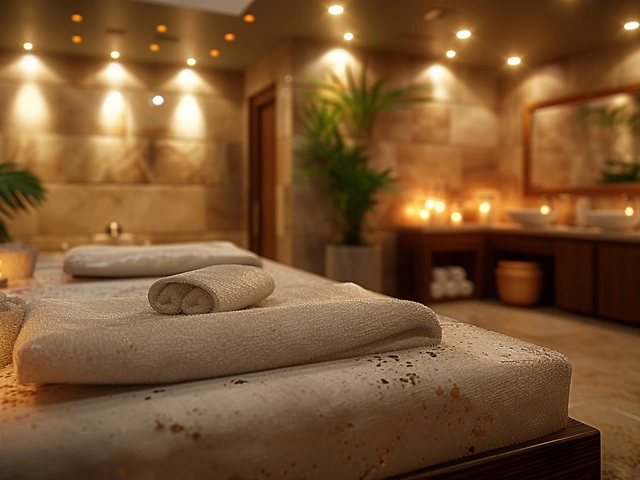Steam Bath: How to Use Steam Rooms for Recovery, Relaxation and Skin Health
Ever spent ten minutes in a steam room and felt like a new person? Steam baths are one of the simplest, cheapest ways to relax muscles, clear sinuses, and boost circulation. This page collects practical tips on when to use a steam bath, how to prepare, and how to get the most benefits without risking your health.
Steam rooms use moist heat to raise your skin temperature and open blood vessels. That increases blood flow to sore muscles and helps loosen tight tissue. Athletes often use short steam sessions after workouts to reduce stiffness. People with colds report easier breathing because steam loosens mucus and soothes irritated airways.
How to use a steam bath safely
Start with a short session: five to ten minutes the first time. Sit on a towel and keep water nearby. Breathe slowly through your nose and sip water during and after the session. Avoid staying longer than twenty minutes in one sitting. If you feel dizzy, nauseous, or lightheaded, leave immediately and cool down.
Shower before entering to remove oils and lotions. That helps the steam work directly on your skin. Dress in light swimwear or a towel. Remove contact lenses and avoid heavy jewelry. Some people bring a small bottle of essential oil—peppermint or eucalyptus can ease breathing—use just a drop on a towel, not in the steam generator.
When to skip the steam
Don’t use steam if you are pregnant without asking a doctor, have a fever, or a recent heart condition. People with uncontrolled high blood pressure or certain skin conditions should check with their healthcare provider. Children should only use steam rooms under close adult supervision and for shorter times.
Pairing steam with massage can boost relaxation and recovery. A short steam session before a massage warms muscles and helps the therapist work deeper with less pressure. After a massage, a few minutes in steam can prolong the relaxation response and ease residual tightness — just keep sessions short and hydrate well.
To make steam sessions part of a routine, schedule them on recovery days or after light exercise. Drink water before and after. Cool down slowly with a lukewarm shower, then rest for ten minutes to let your body rebalance. If you use a gym steam room, follow posted rules and clean the bench with provided wipes where available.
Finally, watch for skin changes. Steam can help with clogged pores and improve glow, but overuse may dry the skin or worsen conditions like rosacea. Use a gentle moisturizer after your session. If you notice persistent irritation, stop sessions and consult a dermatologist.
At home you can get steam benefits with a hot shower and a bowl of water with a towel over your head for five to ten minutes. Keep a timer and water nearby. If you have a sauna habit, alternate dry sauna and steam on different days rather than both in one session. Stay hydrated.

Hammam: Unlocking a Revitalizing Experience for the Modern Individual
Discover what makes the traditional hammam a go-to wellness routine for people today. This article walks you through the hammam experience, from its rituals to the science behind its benefits. Learn practical tips on how to prepare for your first hammam visit and what to expect inside. Find out how the hammam fits into busy modern lives and why it keeps gaining popularity around the world. Get the most out of your next wellness adventure.
Categories
- Health and Wellness (148)
- Alternative Therapies (86)
- Massage Therapy (40)
- Travel and Culture (15)
- Beauty and Skincare (9)
- Holistic Health (8)
- Health and Fitness (5)
- Spirituality (5)
- Other (2)
- Personal Development (2)
Popular Articles

Transform Your Body with Maya Abdominal Massage
Aug, 5 2023


